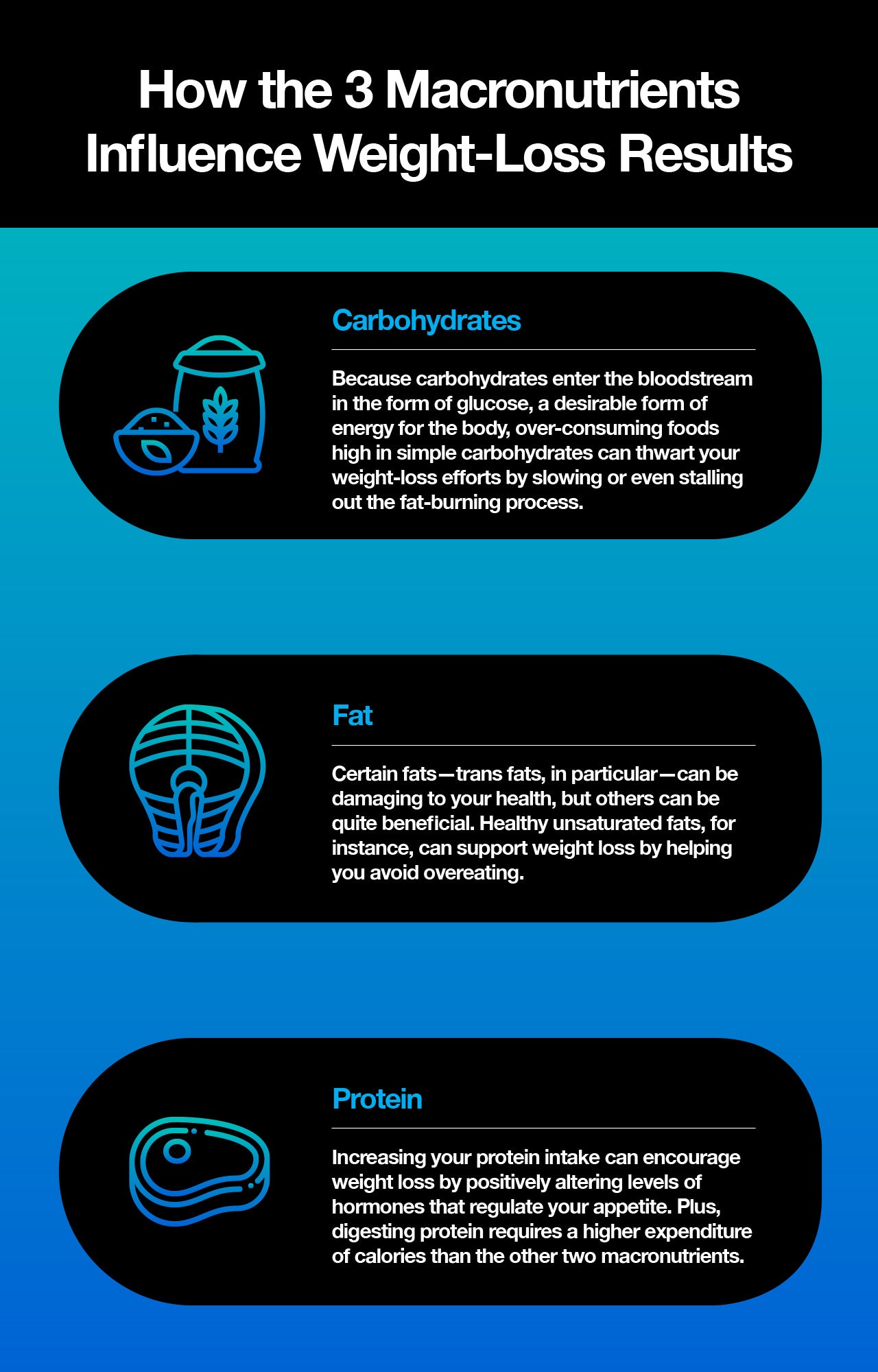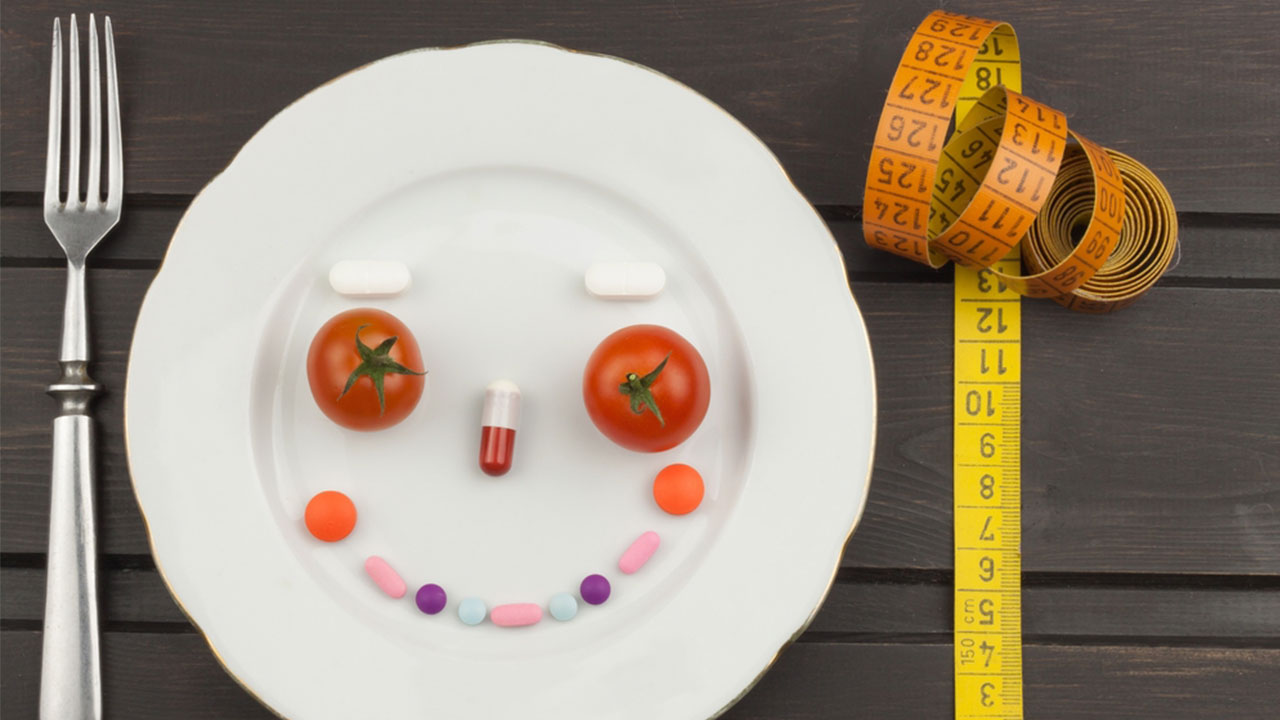How Amino Acids Can Help You Maximize Muscle and Lose Weight
 By: by Amino Science
By: by Amino Science

There are, of course, a wide range of reasons why someone might be interested in learning more about healthy eating. Yet seeking to decrease body fat percentage is undoubtedly a common one. According to the 2018 Food & Health Survey, compiled by the International Food Information Council (IFIC) Foundation, weight loss and weight management ranks second on the list of health benefits Americans hope to obtain from the food they eat, right behind improved cardiovascular health. And nearly 50% of those surveyed said that the desire to lose weight was their primary motivation for adopting a specific eating pattern.
Diet does contribute to weight control, but despite what scads of diet books and bloggers would have you believe, there's no single approach that everyone can use to achieve lasting, healthy weight loss. One person might find that simply eating less and exercising more helps them arrive at the weight that feels right for their body. Another person, however, might find calorie-counting to be counterproductive and instead swear by the efficacy of the ketogenic diet.
Every individual body has its own unique response to different foods. If losing weight is a top health goal for you, bear in mind that it will likely take some time, commitment, and experimentation to finesse an approach that works.
In addition to pinpointing the physiological effects various foods have on your body, you'll want to foster the development of a healthy emotional relationship with food and consider how lifestyle changes, such as increasing your muscle mass percentage, can further your progress toward your goal.
The Relationship Between the 3 Macronutrients and Weight Loss
A traditional school of thought holds that weight loss and weight management can be achieved using a simple formula: eat fewer calories than you expend.
While that sounds appealingly easy to put into practice, anyone who has ever tried losing weight knows that the reality is far more challenging and complex.
One reason for that is the remarkable adaptability of our bodies. Say, for instance, that you adhere to a reduced calorie diet of 1,500 calories per day. For a few weeks, you may see encouraging weight-loss results. But as time progresses, you'll find that eating the same number of calories results in far less significant weight loss or even no weight loss at all. This transpires due to a collection of physiological factors, such as the fact that you're losing water weight and lean mass as well as fat, reducing your caloric intake causes your metabolism to slow, and other changes. All this means that in order to continue to lose weight, you will have to continue to cut calories—an unsustainable practice.
As touched on previously, it's also vital to acknowledge that food is more than fuel. It's woven into the fabric of our social and emotional lives. Certain foods can be powerfully tied to memories of loved ones or special moments. It's natural for food to be a source of comfort, and failing to take that into consideration can quickly derail a calorie-based weight-loss plan.
Furthermore, all calories are not created equal. If you were to eat a 100-calorie serving of white bread, for instance, that would have a notably different effect than a 100-calorie serving of broccoli. Understanding how the three different macronutrients influence weight-loss efforts is crucial to success.
1. Carbohydrates
Many popular diet plans recommend curbing your intake of carbohydrates. The philosophy behind this approach hinges on the insulin response triggered by the consumption of carbohydrates.
Carbohydrates enter the bloodstream in the form of glucose. In order to keep blood sugar levels balanced, your body must burn off this glucose before utilizing any fat. If you eat a high-carbohydrate food, like pasta, rice, or even a glass of fruit juice, your body releases a surge of insulin to counterbalance the glucose rushing through your bloodstream.
In addition to stabilizing your blood sugar levels, insulin also prevents your fat cells from releasing fat to be burned as fuel and creates new fat cells to store any fat not required for immediate energy needs, most of which will be fueled by the glucose from the carbohydrate-heavy foods.
This can create a vicious cycle that not only makes it more difficult to lose weight but can also lead to weight gain. The more carbohydrates you consume, the more insulin your body releases. And since insulin shifts your body into a mode that runs off glucose, the more carbohydrates you eat, the more you will crave them.
Proponents of low-carbohydrate diets, like the keto diet, advise consuming primarily proteins and fats. Depending on how restrictive the limit on carbohydrates as well as how long a particular diet is adopted for, this can have some adverse effects on your overall health. It's important to eat a variety of foods and to pay attention to your intake of saturated and trans fats.
A healthy low-carbohydrate diet should include plenty of lean meats, fish, vegetarian sources of protein, leafy greens, and non-starchy vegetables.
It's important to be aware, too, that not all carbohydrates have the same impact on your blood sugar. Eating simple carbohydrates like white bread and sugary foods will give you a quick hit of energy that fades just as fast. High-fiber, complex carbohydrates, however, serve as steadier sources of fuel. Whole grains, brown rice, and root vegetables like sweet potatoes can be nutritious elements of a healthy eating plan that supports your efforts to lose weight.
2. Fat
Before the low-carb craze, the dominant diet ideology was that eating fat will make you fat. You can still see the vestiges of this in the plethora of low-fat and reduced-fat foods available at grocery stores across the United States. Tellingly enough, the low-fat trend coincided with dramatic spikes in obesity rates, making it clear that cutting fat is not the solution for those seeking to lose weight.
As with carbohydrates, different fats influence your metabolism and overall health in different ways. In fact, many types of fat can be quite healthy and confer benefits such as better weight control, improved mood, and increased energy. For instance, unsaturated fats found in foods such as avocados, fatty coldwater fish, nuts, seeds, soy, and olive oil can help you stay satiated and avoid overeating.
Another issue with low-fat diets is that when people remove fatty foods from their diet, they often replace them with foods high in refined carbohydrates. Many varieties of low-fat yogurt, for instance, contain concerning amounts of added sugar to offset the flavor lost with the fat.
3. Protein
While different experts hold opposing beliefs on the impact of fat and carbohydrates on weight loss, there's near-universal consensus that a high-protein diet aids efforts to lose weight.
A wealth of research supports the connection between protein intake and weight loss and elucidates the physiological mechanisms responsible for it. For instance, studies show that a higher protein intake elevates levels of hormones linked to increased satiety, such as GLP-1, peptide YY, and cholecystokinin, while decreasing levels of ghrelin, a hormone that ramps up your hunger levels.
Another advantage protein has over other macronutrients is a higher TEF (thermic effect of food). Your body must expend energy to digest the food you eat, and each food necessitates a different caloric expenditure. Though it can be difficult to determine the exact TEF for a food, it's apparent that proteins tend to have a TEF between 20% to 30% while carbohydrates fall between 5% and 10% and fats between 0% and 3%. This means that if you ate 100 calories of a protein with a TEF of 30%, you would only have 70 remaining after the digestion process.

Could Increased Muscle Mass Be the Secret to Lasting Weight Loss?
Building muscle mass is the best way to increase your metabolism and ultimately lose weight without changing your calorie intake. But before diving into a weight-burning, muscle-building regimen head first, be sure to understand your main objective.
Muscle cells weigh more than fat cells; so the more muscle you gain, the higher your weight will be—with other body weight remaining constant. Since muscle is denser than fat, it takes up less space, so you achieve a slimmer appearance. Most people seeking to lose weight actually desire to be lean and toned. If this is your goal, then increasing your metabolism is of paramount importance.
The Relationship Between Muscles and Metabolism
The quadriceps (thighs), gluteals (buttocks), back, and chest muscle groups are your body’s largest skeletal muscles. These energy-burning powerhouses use carbohydrates and fats as necessary fuel during physical activity. Certain weight-loss diets emphasize fat as fuel and downplay the importance of carbohydrates. However, the body reduces carbohydrates to glycogen, which triggers the secretion of insulin that enables muscles to grow as they absorb essential amino acids and synthesize proteins.
Your body continually builds up and then breaks down numerous proteins over time (some proteins degrade faster than others) in a process called protein turnover. Essential amino acids that you extract from foods tend to raise the basal metabolic rate, which is the sum total of the energy consumption necessary for your body to thrive while at rest. Boosting your metabolism accelerates the means by which your body consumes energy—fat utilization, caloric depletion, protein turnover, and carbohydrate utilization—throughout the day when you are at rest or moving about.
In addition to building muscle, proteins and the amino acids they are made from are key to a gamut of metabolic functions at the cellular level, including hormone synthesis and enzymatic function. Frequent protein consumption by the cells for various bodily functions coupled with vigorous physical activity deplete protein reserves fast. This is why replenishing the body’s protein reserves is a key component to any muscle builder’s training regimen. Consuming foods or supplements that contain essential amino acids increases the rate of protein turnover—keeping growing muscles healthy and primed to burn fat efficiently.
Lose Weight by Building Muscle—and Paying Attention to These 4 Factors
Maintaining proper protein levels is one of several factors you should consider when developing your weight-loss routine. Genetics, gender, and age are variables that will affect your goals as well as the time it takes to achieve them. Consider that, as you age, the rates at which you synthesize proteins and build muscle tissue slow down. To make both your muscle building and weight-loss efforts as successful as possible, be sure to heed these four other factors for building muscle mass and shedding the fat.
1. Metabolic Rate
The quantifiable basal metabolic rate accounts for the fact that fat burns approximately 2 calories when at rest, while muscle burns 5 to 6 calories at rest daily.
With the right exercises, you can engage muscles that increase the rate at which you burn calories considerably. Limiting calorie intake—by 300 calories per day, for instance—with increased physical activity may accelerate your weight-loss results even further.
2. Physical Activity
If you decide to increase your physical activity to raise your metabolism, the type of activity you choose matters. Extreme cardiovascular exercises, like running or biking, tend to burn more calories during a workout.
But with strength training exercises, you can potentially burn more calories up to 24 hours after your workout, as they positively impact your resting metabolic rate. Engaging large muscle groups during resistance training maximizes your post-workout calorie-burning potential even more.
3. Muscle Fibers
Your muscle fibers are yet another element that plays into the effect various types of physical activity will have on your physique.
Depending on your genetic makeup, your muscle tissue may be composed of either slow-twitch (type I) or fast-twitch (type II) muscle fibers. Type I muscle fibers require more time to grow than type II muscle fibers.
Long-distance and endurance training are best suited for slow-twitch muscle fibers, while fast-twitch muscle fibers respond best to explosive bursts of activity (e.g., sprints) and are able to withstand higher intensities.
There are a number of muscle fiber tests available to help you determine which types of physical activity are ideal for you.
4. Water Retention
Excess water retention may hinder you from defining muscle and appearing slimmer. Eating too much sodium (salts in processed foods, for example) or consuming too little can cause electrolyte imbalance and fluid retention. Dehydration, magnesium deficiency, stress, and lack of sleep are also prime culprits for water weight gain.
Active muscles need and absorb fluid. The energy that active muscles generate triggers perspiration of water and salts through sweat glands. The more you use muscle, the more water and essential tissue salts you stand to lose.

Expert Advice on Increasing Muscle Mass
The more muscle you have, the more calories you burn and the more weight you stand to lose. Choose exercises that adequately engage large muscle groups in the chest, back, and legs.
If you prefer to engage muscles without using weights, try swimming or yoga exercises. Swimming engages large muscles in the arms, thighs, and buttocks. The yoga plank pose engages the core back and abdominal muscles; lunges target the thighs and buttocks; the back-flexing locust pose strengthens spinal muscles.

On your path to building fat-burning muscle, stay hydrated, get good rest regularly, and limit stress to help ensure a smooth transition to your desired weight.
Always consult a physician before taking on a new exercise program or drastically changing your diet. It can also be quite helpful to talk with your doctor or health practitioner about your weight-loss goals, given that certain medical conditions or medications may interfere with your intended results. An abrupt change in diet or physical activity can also complicate other treatments.
Seek immediate medical attention if you experience unexplained weight gain or rapid weight loss, as these could be signs of serious medical disorders.
The Crucial Role Amino Acids Play in Achieving Optimal Results
A diet replete with high-protein, amino-acid rich foods is best for growing and sustaining muscle growth, though you should also be sure to include healthy fats and complex carbohydrates, too. Some high-protein foods are:
| Eggs | Salmon |
| Cottage cheese | Chickpeas |
| Tofu | Almonds |
| Beans | Tuna |
| Chicken breast | Milk |
| Quinoa | Bison |
Recommended daily protein consumption varies depending on gender, age, and size, but on average look to ingest 0.36 grams of protein per pound of body weight to satisfy your body’s functional needs. Ten to 15 grams of additional protein is necessary to build 1 pound of muscle.
Aim to consume more fats than carbohydrates, but don’t discount the carbohydrates since they support proper protein absorption in muscles via insulin facilitation and they decelerate protein breakdown. Bananas, sweet potatoes, and apples are a few examples of healthy carbohydrates.
A standard recommendation is a diet that consists of 20% carbohydrates, with healthy fats comprising 50% to 70% and protein making up the remainder. Foods that contain healthy fatty fuel for muscles include avocados, cheese, nuts, extra-virgin olive oil, coconuts, full-fat yogurt, dark chocolate, and chia seeds (as it happens, all foods rich in amino acids!).
Depending on your dietary needs and preferences as well as your activity levels, you may find it challenging to meet your body's amino acid needs. Consuming protein powders, especially essential amino acid blends dissolved in shakes or liquids, can help to make up the difference. Of the three main protein powders—whey, casein, and soy—whey is more soluble and contains all nine essential amino acids. Of these nine amino acids, leucine, isoleucine, and valine are crucial for nourishing muscles, especially leucine.
Essential amino acid powder supplements, however, offer potential advantages compared to protein powders such as whey. Amino acid mixtures can be formulated exactly as desired to address specific metabolic issues, and they can be completely absorbed more rapidly than any intact protein, including whey protein.
Click here to supplement with the world's best doctor-developed amino acid supplements. Check out this article to learn more about using essential amino acids with whey for ultimate muscle-building impact.

Up to 25% off Amino
Shop NowTAGS: tips
Join the Community
Comments (0)
Most Craveable Recipes




 833-264-6620
833-264-6620



















